Think you know sharks? Think again. Some of the most aggressive species are lurking just beneath the surface, ready to strike fear into even the most seasoned diver.
These sharks aren’t just big—they’re relentless, with a hunger for power and a reputation for unpredictability. From the great whites that can shred through the ocean with ease, to the hammerheads that stalk their prey with eerie precision, aggression is in their blood.
But what makes these sharks so terrifying? It’s not just their size or speed—it’s their nature. These apex predators have mastered the art of hunting, and they’re not afraid to show it.
Ready to meet the monsters of the deep? Here are the most aggressive sharks swimming in U.S. waters, and trust us, they’re not here for a friendly swim.
Great White Shark

Arguably the most famous shark, the Great White’s reputation precedes it. With its torpedo-shaped body and steely eyes, it commands respect. Known for its size, it can grow up to 20 feet long.
These apex predators are often found along the California coastline, where they hunt seals and sea lions. Their hunting strategy is both efficient and awe-inspiring. Great Whites breach the water with dynamic force, capturing prey in a single, swift motion.
Their sheer power and speed make them one of the most formidable creatures in the ocean. However, attacks on humans are rare.
Bull Shark
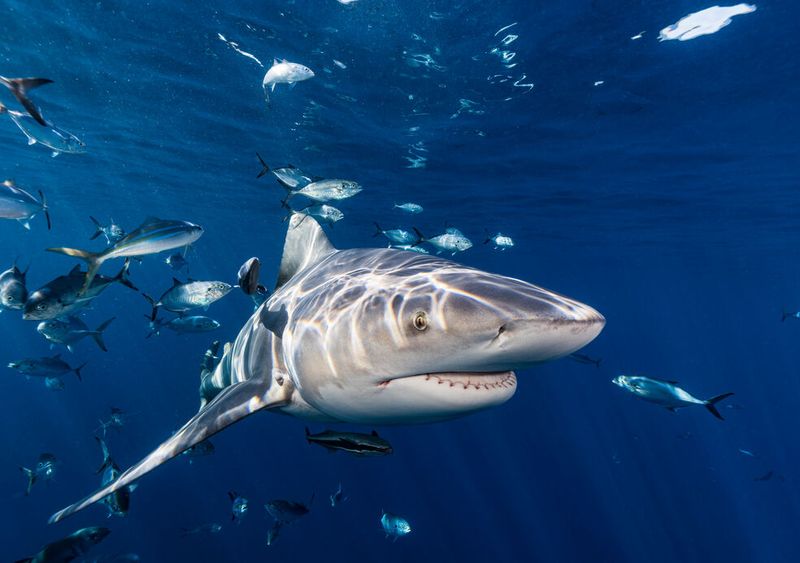
The Bull Shark, notorious for its aggressive nature, thrives in both saltwater and freshwater environments. Its stocky build and unpredictable behavior set it apart.
Unlike other sharks, Bull Sharks can migrate upstream, making them a frequent visitor to coastal estuaries and rivers. This adaptability increases their chances of encountering humans. They are often spotted in the Gulf of Mexico, where they hunt fish and other marine life.
Their robust form and territorial instincts make them a captivating yet dangerous presence in these waters. Their resilience is truly extraordinary.
Tiger Shark

Recognizable by its distinctive stripes, the Tiger Shark is an opportunistic feeder. These stripes fade as they mature, but their curious nature remains.
Tiger Sharks are known to explore shallow waters, especially around Hawaii. They feast on a diverse diet ranging from fish to birds, even man-made objects. This indiscriminate diet has earned them the nickname ‘wastebasket of the sea’.
They are solitary hunters, often patrolling coral reefs with silent grace. Their adaptability and curiosity make them both fascinating and unpredictable predators.
Hammerhead Shark

With its unique, hammer-shaped head, the Hammerhead Shark is a marvel of evolution. This head shape enhances its sensory perception, enabling precision hunting.
Hammerheads are often seen in schools near the Florida coast, where they hunt small fish and squid. Their social behavior is unusual among sharks, adding to their mystique.
Their wide-set eyes provide a panoramic view of their surroundings, allowing them to detect prey with remarkable accuracy. Despite their intimidating appearance, Hammerheads are generally non-aggressive toward humans.
Mako Shark

The Mako Shark, known for its speed, is a true athlete of the ocean. Its streamlined body and powerful tail make it the fastest shark species, reaching speeds up to 60 mph.
Found in the temperate waters of the Atlantic, they are active hunters, preying on fish and cephalopods. Their agility and speed make them efficient predators, often outpacing their prey with ease.
Their impressive speed and striking appearance make them one of the ocean’s most exciting inhabitants. Despite their prowess, they are not considered dangerous to humans.
Oceanic Whitetip Shark
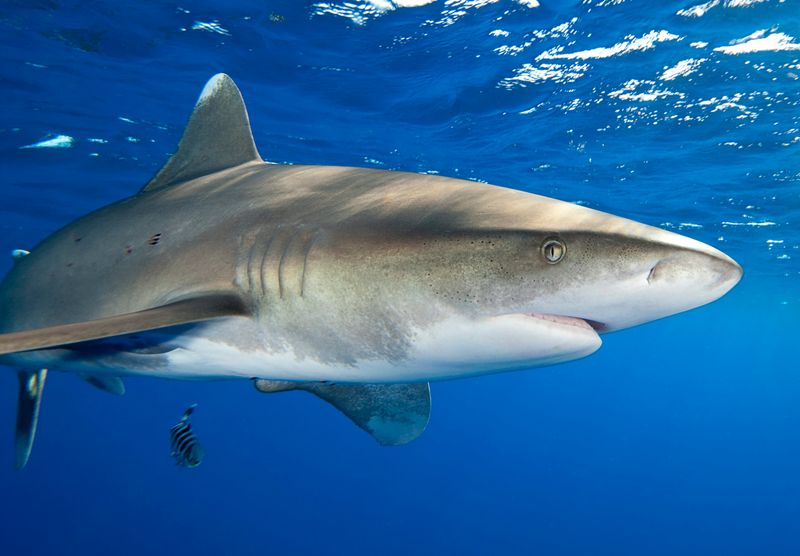
The Oceanic Whitetip Shark, with its long, rounded fins tipped in white, is a master of the open ocean. Known for its bold nature, it often approaches divers out of curiosity.
These sharks are primarily found in the warm waters of the Gulf Stream, where their opportunistic feeding habits come into play. They feed on bony fish and cephalopods, showing little hesitation in their approach.
Their inquisitive nature and striking appearance make them a subject of fascination. However, caution is advised as they can be assertive when investigating potential food sources.
Sand Tiger Shark

The Sand Tiger Shark, with its menacing appearance and sharp teeth, is often misunderstood. Despite its fierce look, it is relatively docile, primarily hunting small fish and crustaceans.
These sharks prefer the temperate waters off the Eastern Seaboard, where they patrol wrecks and reefs. Their slow-moving demeanor belies their keen predatory instincts.
Their needle-like teeth are always visible, lending them a fearsome look. Yet, Sand Tigers are generally not aggressive towards humans, making them a popular attraction for divers and researchers alike.
Blacktip Shark
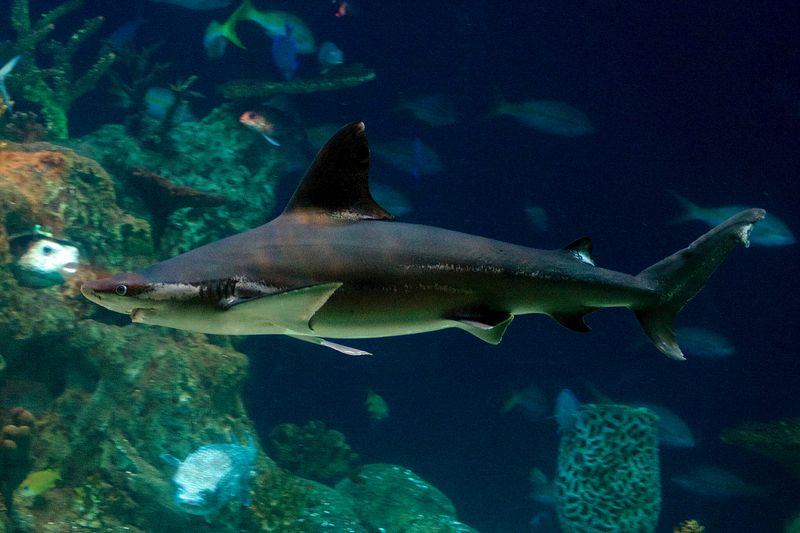
The Blacktip Shark is a common sight along the Southeastern U.S. coast. Its agility and speed make it a dynamic hunter, often seen leaping from the water during feeding frenzies.
These sharks are known for their migratory patterns, traveling in large schools. Their black-tipped fins and slender bodies are easily recognizable features.
While they are active hunters, they are generally wary of humans, preferring to feed on small fish and cephalopods. Their lively presence adds excitement to the oceanic tapestry, showcasing the ocean’s vibrant life.
Nurse Shark
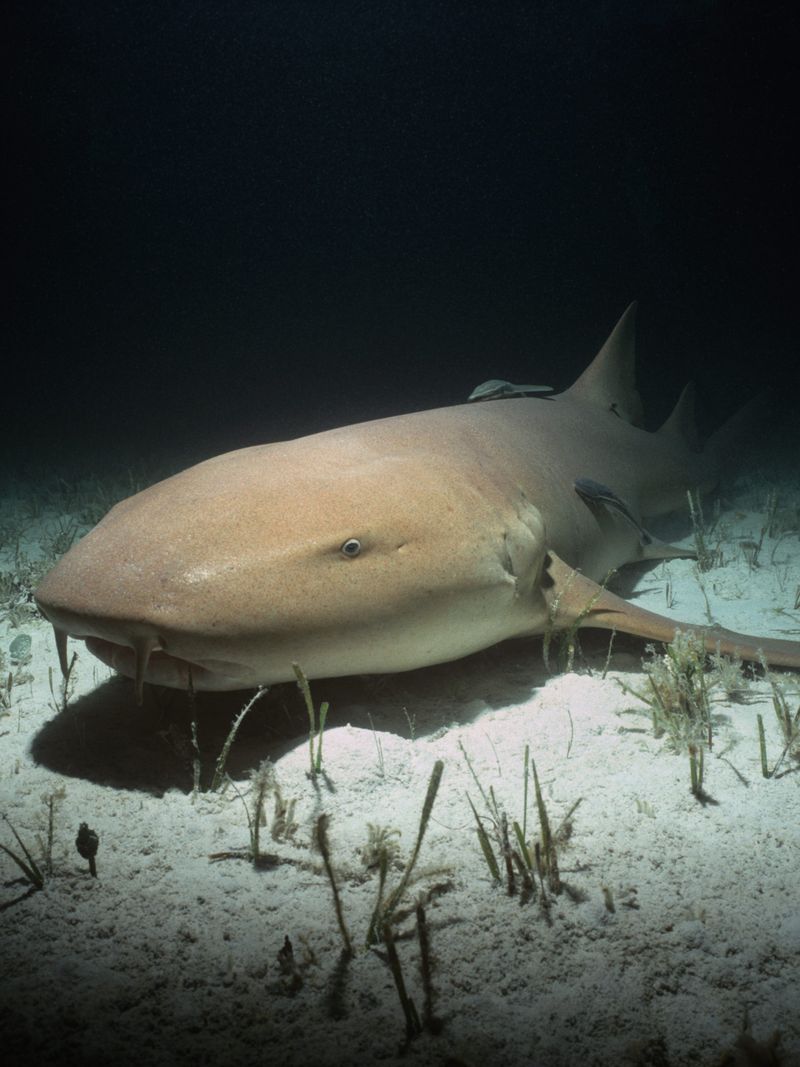
The Nurse Shark, with its distinctive rounded body and sluggish demeanor, is a staple of warm coastal waters. They are often seen resting on the ocean floor, where their barbels help locate prey.
These sharks are nocturnal feeders, hunting crustaceans and small fish under the cover of darkness. Found in the waters of Florida and the Caribbean, they are known for their docile nature.
Despite their size, they pose little threat to humans. Their calm presence is a reminder of the ocean’s gentle giants, coexisting with a myriad of marine life.
Silky Shark
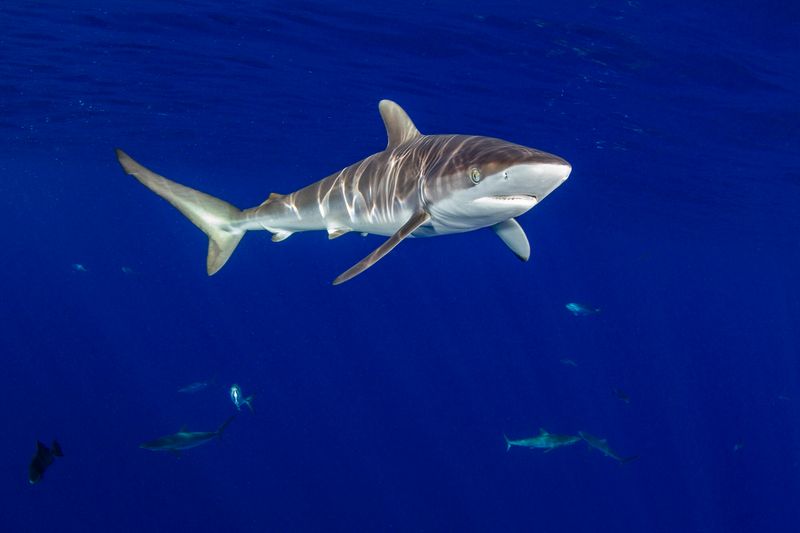
The Silky Shark, named for its smooth skin, is an elegant predator. Its slender body and swift movements make it a master of the open ocean.
Found in the warm waters of the Gulf of Mexico, they are known for their social behavior, often forming schools. Their diet consists of bony fish and squid, which they pursue with relentless determination.
Their graceful presence masks a tenacious spirit, making them both beautiful and formidable. Silky Sharks are an integral part of the oceanic ecosystem, their role as predators maintaining balance in the marine food chain.

